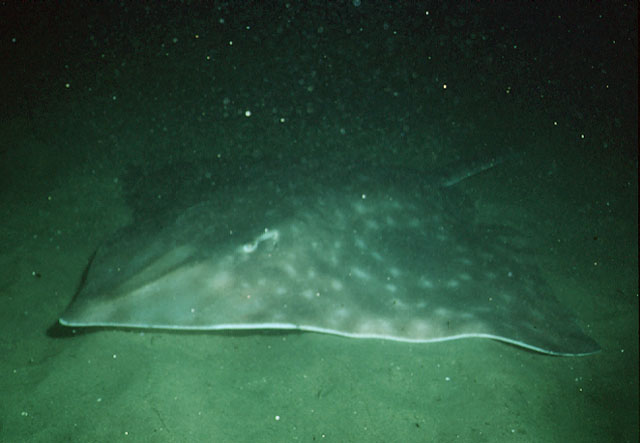| Rajidae (Skates) |
| 244 cm TL (male/unsexed); max.weight: 91 kg |
|
demersal; marine; depth range 3 - 800 m |
| North Pacific: Glubokaya Bay, Cape Navarin, and Stalemate Bank to Cedros Island, Baja California, Mexico. |
|
Dorsal spines (total): 0-0; Dorsal soft rays (total): 0-0; Anal spines: 0-0; Anal soft rays: 0-0. Dorsal fins well back on tail, small; caudal and anal fins absent; pectorals broad, attached to snout and incorporated with body; pelvic fins large, moderately concave on free margins (Ref. 6885). Posterior sides of tail with a small fleshy keel on either side (Ref. 6885). |
| Largest skate in North America (Ref. 2850). Feed on crustaceans and fishes (Ref. 6885). Oviparous. Distinct pairing with embrace. Young may tend to follow large objects, such as their mother (Ref. 205). Young hatch at 18-23 cm TL (Ref. 114953). Eggs are oblong capsules with stiff pointed horns at the corners deposited in sandy or muddy flats (Ref. 205). Egg capsules are 22.8-30.5 cm long and 11.0-19.4 cm wide (Ref. 41249, 41300, 41357). Pectoral fins utilized for human consumption (Ref. 2850). Marketed fresh and frozen; eaten fried and baked (Ref. 9988). |
|
Least Concern (LC); Date assessed: 30 December 2014 Ref. (130435)
|
| harmless |
|
Source and more info: www.fishbase.org. For personal, classroom, and other internal use only. Not for publication.

